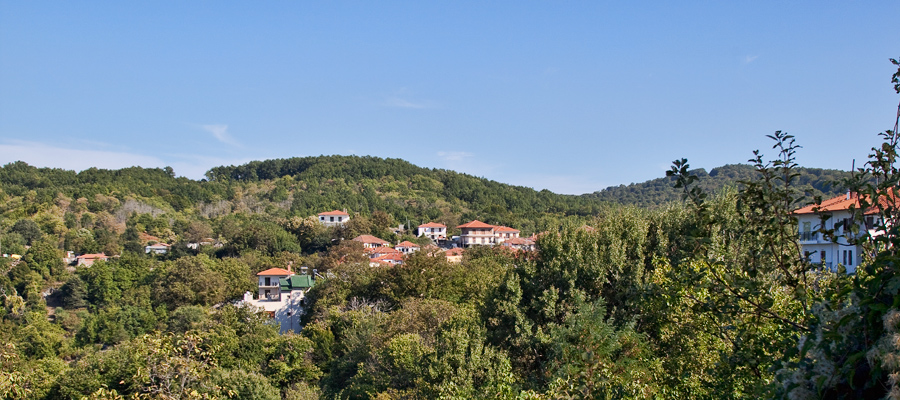Varvara
A more than 90.000 acres green, forested land seems to hold a lucky village in its hug. It is named after its patroness Aghia Varvara (St. Barbara), with its main church built in 1875 or -according to local myth- after the region’s earlier queen. Built at 550m height, between the hills of Derveniko and Sougkliani, Varvara has neighborhoods with narrow paths, plenty of running water and springs. It offers a great view beyond Strymoniko and the lake Volvi.
The place seems to have been populated since the 14th century A.D. First evidence was found in a document of the religious judge of Sidirokafsia. The village of Varvara was added to the Mademochoria Federation by a Turkish firman in 1762. In 1821, it had the fate of the other villages of Halkidiki and was burned by the Turks. It took an active role in the Macedonian Struggle under the commander Athanasios Minopoulos.
At present day, Varvara has more than 800 residents occupied in logging and animal breeding.
The local woman association produces frumenty (“trahanas”) and delicious sweets. The village celebrates in an incomparable mountainous winter landscape on December 4, the day of St. Varvara. A great feast also takes place on the day of St. George (second day of Easter) and lasts 3 days.
Info
Varvara is 20 km from Arnaia, to the northeast. It is famous in the region due to its two waterfalls located inside the forest towards Olympiada.






